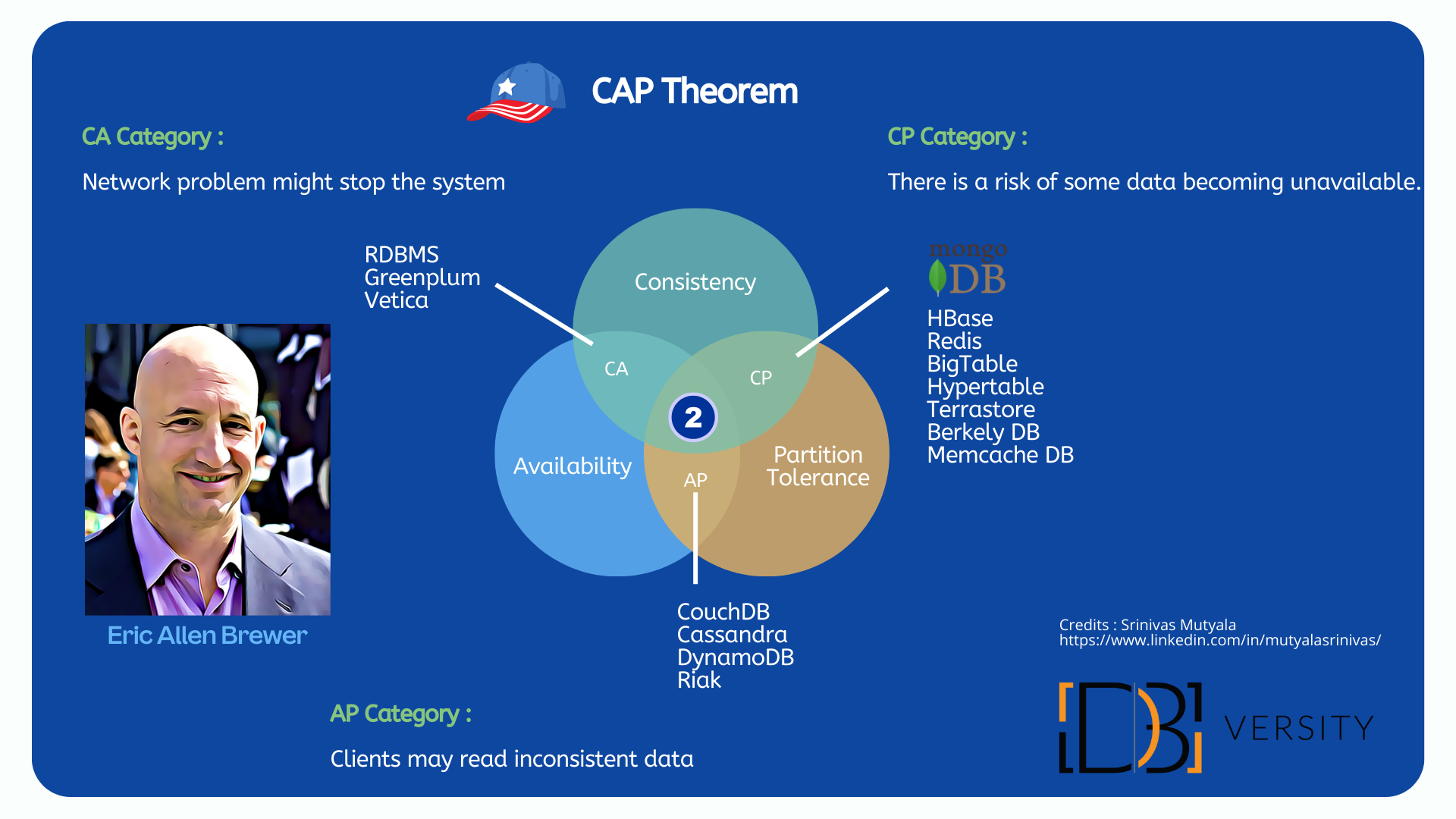CAP Theorem – MongoDB (NoSQL)
The CAP Theorem, also known as Brewer’s Theorem, states that in a distributed system, it is impossible to simultaneously guarantee three desirable properties: consistency (C), availability (A), and partition tolerance (P). These properties are defined as follows:
- Consistency (C): This refers to ensuring that all nodes in a distributed system have the same data at the same time. In other words, all read operations will return the most recent write or an error. Consistency can be seen as maintaining data integrity and correctness.
- Availability (A): This property implies that the system continues to function and provide responses even in the presence of failures. In other words, every request receives a response, whether successful or unsuccessful. Availability is crucial for systems to remain operational and accessible to users.
- Partition Tolerance (P): Partition tolerance refers to the system’s ability to continue functioning and providing responses even if communication between nodes is disrupted or delayed (i.e., network partitions occur). Network partitions can happen due to various factors, such as network failures or latency issues.
According to the CAP Theorem, when a network partition occurs, forcing the system to choose between consistency and availability, it must sacrifice one of these properties to maintain partition tolerance. In other words, during a partition, a distributed system can either:
- Choose Consistency over Availability (CP): In this case, the system prioritizes maintaining data consistency across all nodes. It may sacrifice availability by refusing requests or providing errors when a partition occurs until consistency is restored.
- Choose Availability over Consistency (AP): Here, the system prioritizes providing availability and responds to all requests, even during a partition. However, in this mode, the system may temporarily have inconsistencies or allow concurrent updates that may result in conflicts. Eventually, the system reconciles and achieves eventual consistency.
According to the CAP Theorem, a distributed system, including NoSQL databases, can only guarantee two out of the three properties—consistency, availability, and partition tolerance—simultaneously. This means that when a network partition occurs, forcing the system to choose, it must sacrifice one of the properties.
In the context of NoSQL databases like MongoDB, different databases may make different trade-offs based on their design principles and intended use cases. Some NoSQL databases prioritize consistency and partition tolerance (CP), while others prioritize availability and partition tolerance (AP). The choice of consistency model depends on the specific requirements of the application.
For example, MongoDB defaults to the AP model, prioritizing availability and partition tolerance. It achieves this through features like automatic sharding, replica sets for data redundancy, and eventual consistency. However, MongoDB also provides configurable consistency options, allowing developers to choose stricter consistency models if needed.
It’s worth noting that the CAP Theorem is a theoretical framework that helps understand the fundamental trade-offs in distributed systems. In practice, different NoSQL databases and distributed systems may make nuanced trade-offs, and the specific implementation details can vary.
MongoDB is a distributed NoSQL database that places a strong emphasis on high availability and partition tolerance. It provides configurable consistency models that allow developers to choose their desired trade-off between consistency and availability based on their application requirements. MongoDB’s default configuration follows the AP model, where availability is prioritized over strict consistency, aiming for eventual consistency across nodes.


Comments are closed, but trackbacks and pingbacks are open.